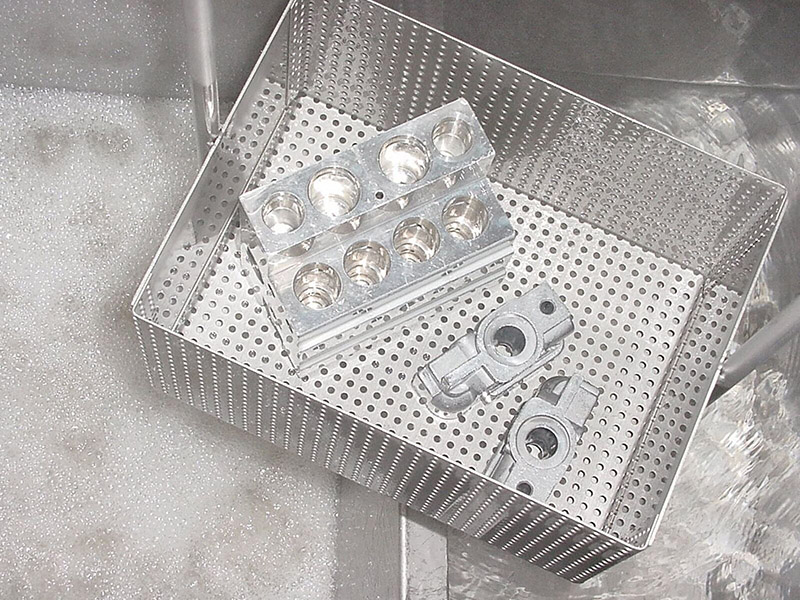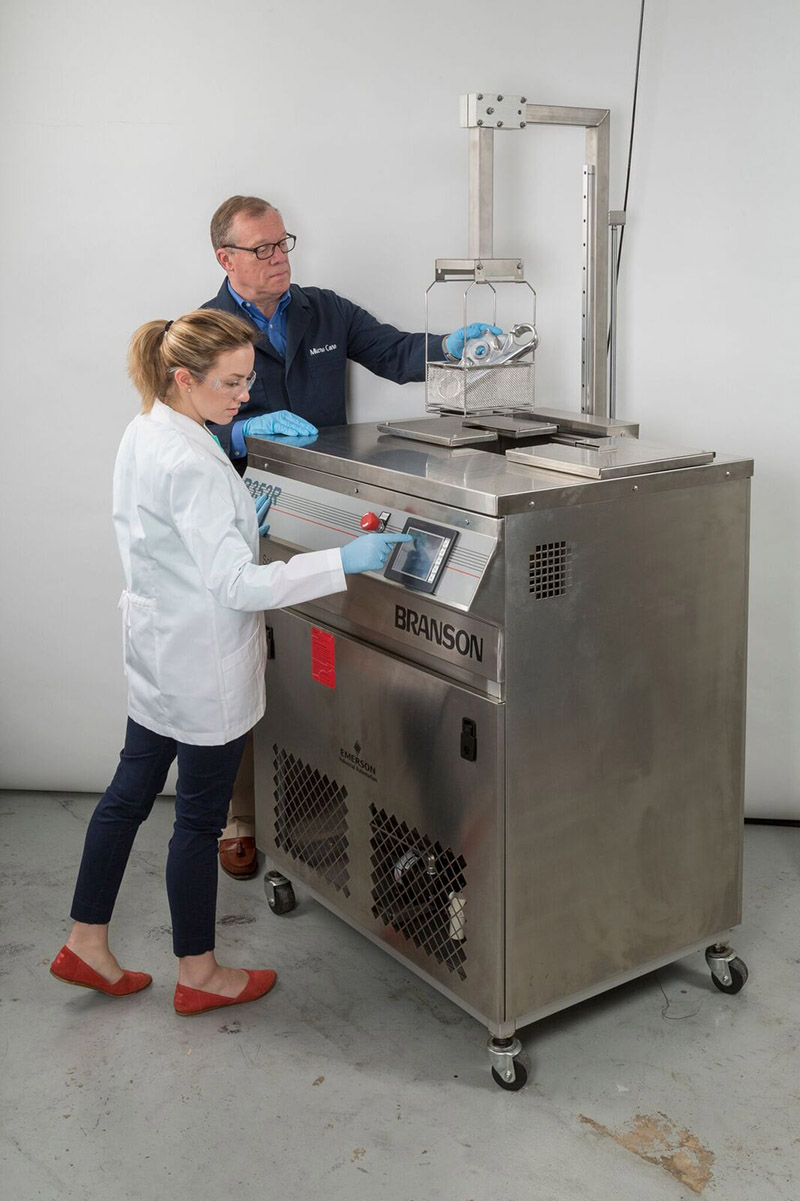Design engineers face many challenges, some of which are specific to the medical device industry. For example, as devices, and therefore device components, get smaller, they also become harder to clean. More moving pieces cause functional issues related to stacked tolerances impacting movement and necessitating the use of lubricative coatings to ensure optimal performance. Working with chemicals may pose safety risks, especially in high-production environments. Not to mention, environmental standards are higher than ever, requiring only certain classes of chemicals to be used for medical device cleaning and coating.
Luckily, there have been major advances in solvent technology and these environmentally friendly products exist today. This article will take a look at factors such as safety, cost and most importantly, product effectiveness, to help you as medical device designers evaluate different environmentally friendly products to determine what will work best for your application.
Green Cleaning
Today, one of the most prevalent trends in medical device design is miniaturization. There is a demand for smaller, lighter and more portable devices, and this doesn’t come without challenges. As devices and their components get smaller, they generally get harder to clean – this is a major challenge, given that cleanliness directly impacts device manufacturing validation requirements and ultimately end use performance. It’s also a challenge because engineers do not want to sacrifice optimal design parameters to make something easier to clean. That’s where solvent technology with vapor degreasing cleaning systems can make a difference.
In the early 1990s, a dramatic shift took place around cleaning medical device parts. Prior to that, cleaning using vapor degreasing systems with solvent-based cleaners was considered the gold standard, but more recent environmental concerns made it clear that it wasn’t always the green standard. This revelation and new regulations led medical device manufacturers and designers to largely switch to aqueous (water)-based systems for their cleaning needs.
It remained status quo for some time before companies began producing cleaning solvents that removed chlorine, one of the main components linked to environmental concerns due to ozone depletion. These new solvents met both safety and environmental standards; however, due to their poor solvency, they didn’t meet cleaning performance requirements – a factor that is vital in the medical device industry. More recently, major advances have been made in non-flammable solvent technology to achieve chemical formulations that are chlorine-free, don’t contribute to global warming and are not regulated as volatile organic compounds to meet even the strictest of cleaning requirements. Furthermore, the new solvents are well suited for use in efficient vapor degreasing cleaning systems. Vapor degreasers have a small footprint and are extremely desirable for use in cleanrooms.
Two characteristics of solvents include low viscosity and low surface tension. This allows them to clean within small gaps and crevices that are all the more common with today’s smaller medical devices. Other cleaning solutions, such as water, used in aqueous systems have a higher surface tension and cannot penetrate those areas as easily.
Cost is another consideration when evaluating and selecting a cleaning technology. There are many factors that can impact cost for specific situations, but generally speaking, using solvents with a vapor degreasing process provides a low total cost-per-part-cleaned. This is because vapor degreasers have a substantially lower energy consumption, smaller footprint on the cleanroom floor, and minimal capital outlay when compared with a water system. Furthermore, removing bioburden from the manufacturing process is one that can result in major time and cost consequences. Elimination of bioburden becomes a significant engineering challenge when cleaning with water, as water is the primary growth medium for bacteria. However, a well-engineered vapor degreasing process reduces costs associated with bioburden control, given that solvents are hostile to pyrogenic growth and the manufacturing process can easily be validated as bioburden-free.
Medical device design engineers and manufacturers can be confident when using solvent technology and vapor degreasing cleaning systems, about the cleanliness of all surfaces of the finished product to facilitate process validation.

Parts in vapor degreaser basket
Eco-Friendly Coatings
Solvent based carrier agents are widely used to deposit medical-grade lubricants that enable optimal device performance. Consistency in the application of these coatings is extremely important. While they can be applied in a variety of ways, a carrier solution is often used for dilution and application purposes. For example, medical grade silicone, a highly-used lubricant in the medical device industry, is provided only in concentrated form, so a fast-drying carrier fluid is used to dilute the lubricant, allowing for a very thin film of silicone to be applied to a surface by dipping or spraying. Another frequently used lubricant is polytetrafluoroethylene (PTFE). In order to apply this dry lubricant to a medical device, a microdispersion of PTFE in a fast-drying carrier fluid is used. The microdispersion is then applied to parts using a spray or by dipping parts into the liquid. The carrier fluid then evaporates and what’s left is a smooth, dry PTFE coating.
Similar to solvents used for cleaning, historically, there have also been safety issues and environmental concerns around carrier fluids. Many of the options available posed safety risks around flammability, especially on manufacturing floors that see high production volumes.
Furthermore, as mentioned earlier, one of the most widely used medical-grade lubricants is silicone, and silicones are difficult to put into solution with a carrier fluid that’s neither highly flammable nor toxic. At first, new carrier fluids were developed that had a good health, safety and environmental profile, but they only could take 1-2 percent silicone, which is often well below the threshold required for many medical devices. Luckily, new innovations in carrier fluid chemistries have resulted in medical grade formulas that have ISO 10993 certification, nonpyrogenic properties and full compatibility with sterilizing processes. With PTFE materials, specifically, there are few, if any, toxicity or handling issues and nonflammable carriers can be specified.
Having good options for carrier fluids is important for design engineers because lubricants can help ensure optimal device performance and provide greater design flexibility. One example of this is with the issue of stacked tolerances. In devices with multi-part mechanical assemblies, the combination of the tolerances of each individual component “stack” together and cause issues with assembly and friction, slowing down the assembly process and possibly even degrading the operation of the finished device. Design engineers could design everything with tighter dimensional tolerances, but due to the cost limitations around that option, lubricating the components is often a much more desirable choice.

Jay and Venesia in lab vapor degreaser
We’ve come a long way, baby
Today’s solvents have come a long way since those from a few decades ago. Today, solvents must meet strict environmental standards and regulations. In fact, solvents containing certain classes of chemicals such as HCFC-225, nPB and TCE, have been phased out completely to be replaced with safer and compliant alternatives that also meet the high cleaning standards demanded by the medical device industry. That’s great news – and by examining factors like cost, safety and overall effectiveness, you can make confident decisions about which environmentally-friendly products will work best for your needs.
Jay Tourigny is senior vice president at MicroCare Medical. He has been in the industry more than 25 years and holds a Bachelor of Science degree from Massachusetts College of Liberal Arts. Tourigny holds numerous U.S. patents for cleaning-related products that are used on a daily basis in medical, fiber optic, and precision cleaning applications. For more information, visit www.microcaremedical.com.




